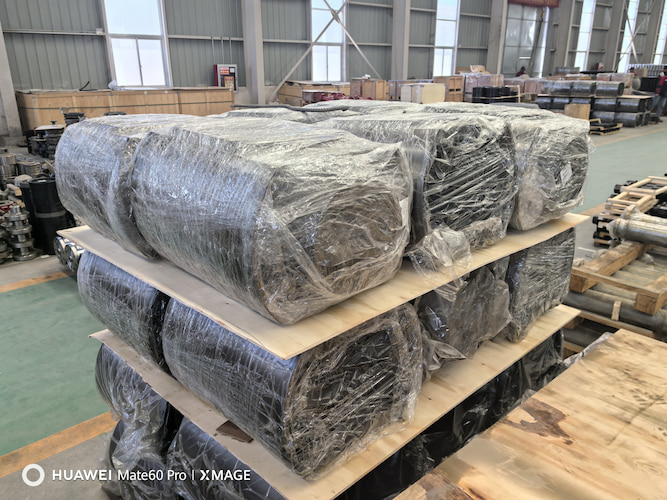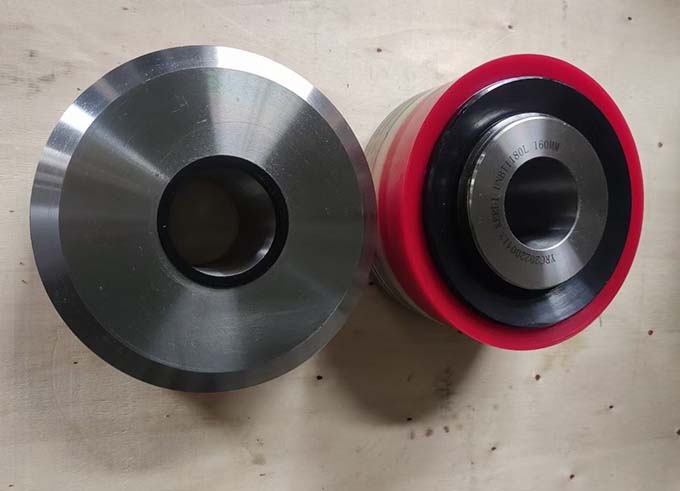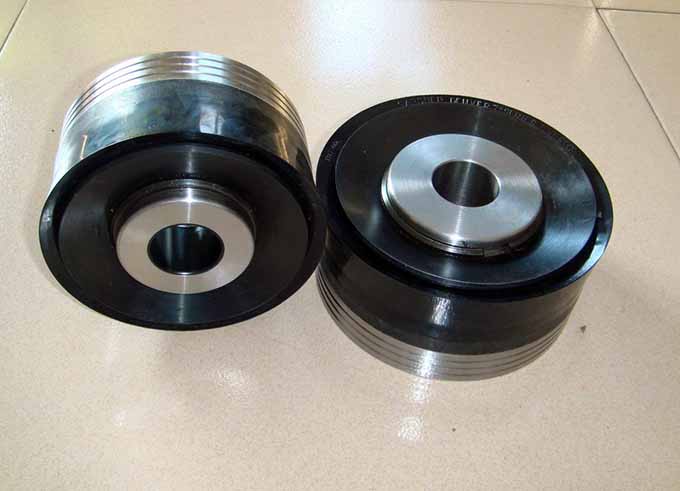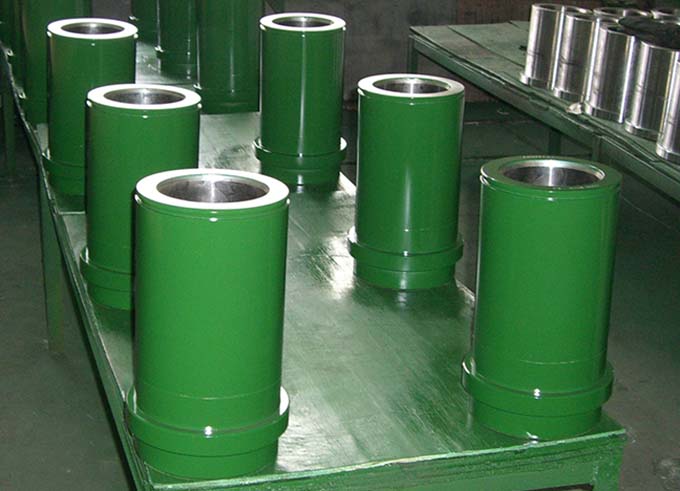What is crosshead assembly of the drilling mud pump?
Apr 23, 2025
The crosshead assembly of the drilling mud pump is one of the key components of the mud pump. The following is a detailed introduction to each of its components:
Ⅰ. Crosshead Assembly
Crosshead
Structure and Function: It is usually a block structure made of cast steel or high-strength cast iron. It serves as the hub connecting the connecting rod and the pony rod. It converts the swinging motion of the connecting rod into the linear reciprocating motion of the pony rod, and at the same time, it bears the huge pressure and impact force during the operation of the mud pump.
Design Features: It has multiple connection holes and mating surfaces, which are precisely connected and mated with other components. Its surface is processed to ensure good contact with components such as the crosshead slide block and the crosshead pin, reducing wear and friction.
Crosshead Pin
Structure and Function: Generally, it is a cylindrical metal pin, and its diameter is determined according to the specifications and load of the mud pump. It passes through the crosshead and the small end of the connecting rod, connecting the two together and transmitting power and motion.
Material and Process: It is made of high-quality alloy steel, such as 40Cr, etc. Through processes such as forging, machining, quenching, and grinding, it has high strength, hardness, and wear resistance. The surface hardness is generally around HRC50-55 to withstand frequent impact loads.
Mud Pump Crosshead Guide Board
Structure and Function: It is usually a pair of planar metal plates, installed at fixed positions on both sides or around the crosshead. Its function is to provide precise guidance for the movement of the crosshead, ensuring that the crosshead moves back and forth along a straight line trajectory and reducing shaking and deviation.
Material and Surface Treatment: Commonly used materials are wear-resistant cast iron or bronze. To improve wear resistance and reduce the friction coefficient, the surface is chromed or nitrided. The thickness of the chrome plating layer is generally between 0.02-0.05mm.
Mud Pump Pony Rod
Structure and Function: It is a slender rod-shaped component connecting the crosshead and the piston. It transmits the linear motion of the crosshead to the piston, enabling the piston to move back and forth in the pump cylinder, thus realizing the suction and discharge of the mud.
Material and Performance Requirements: High-strength alloy steel, such as 35CrMo, etc., is used. It has a high tensile strength and yield strength, generally with a tensile strength of over 800-1000MPa to withstand the pulling and pressure forces generated when the piston moves in the pump cylinder.
Crosshead Bearing
Structure and Function: It is installed between the crosshead and the machine body or other fixed components, used to support the weight and motion load of the crosshead. It plays a role in reducing friction, lowering wear, and ensuring the flexible movement of the crosshead.
Types and Characteristics: Common types include sliding bearings and rolling bearings. Sliding bearings usually use materials such as Babbit metal or bronze, which have good wear resistance and anti-seizure properties and can withstand large impact loads, but require good lubrication conditions. Rolling bearings have the advantages of a small friction coefficient and low starting resistance, but they have high requirements for installation accuracy and lubrication.
Mud Pump Crosshead stuffing Box
Structure and Function: It is a sealing device installed between the crosshead and the pump body, mainly composed of components such as the stuffing box, packing, and gland. Its function is to prevent the mud from leaking from the gap between the crosshead and the pump body, ensuring the sealing performance and working efficiency of the mud pump.
Sealing Material and Principle: The packing is usually a ring-shaped structure made of materials such as graphite, asbestos, or polytetrafluoroethylene. By applying a certain pressure to the packing through the gland, the packing forms a seal in the packing box to prevent the mud from leaking. The sealing performance of the packing box directly affects the working environment and efficiency of the mud pump, and the packing needs to be regularly inspected and replaced.
Ⅱ. The working principle of the crosshead assembly of the mud pump is to convert the rotational motion of the crankshaft into the linear reciprocating motion of the piston, thereby realizing the suction and discharge of the mud. The specific process is as follows:
Power Input: The power source of the mud pump (such as an electric motor or a diesel engine) drives the crankshaft to rotate through transmission devices such as pulleys and gears. The crankshaft is the main transmission component of the mud pump, and its rotational motion is the power foundation for the operation of the entire mud pump.
Motion Conversion: The rotational motion of the crankshaft is transmitted to the crosshead assembly through the connecting rod. One end of the connecting rod is connected to the crank pin of the crankshaft, and the other end is connected to the crosshead pin. When the crankshaft rotates, the connecting rod makes a swinging motion. Since the crosshead is restricted within the guiding range of the crosshead guide board and can only move linearly, the swinging of the connecting rod forces the crosshead to make a linear reciprocating motion under the constraint of the crosshead guide board.
Force Transmission: During the linear reciprocating motion of the crosshead, the force is transmitted to the piston through the pony rod. One end of the pony rod is connected to the crosshead, and the other end is connected to the piston. In this way, the linear motion of the crosshead is transmitted to the piston, making the piston move back and forth in the mud pump fluid end module.
Mud Conveyance: When the piston moves back and forth in the mud pump fluid end module, it changes the volume inside the mud pump fluid end module. When the piston moves backward, the volume inside the mud pump fluid end module increases, the pressure decreases, and the mud enters the mud pump fluid end module through the suction valve under the action of atmospheric pressure; when the piston moves forward, the volume inside the mud pump fluid end module decreases, the pressure increases, and the mud is squeezed out through the discharge valve, thus realizing the suction and discharge process of the mud.
The crosshead bearing plays a role in supporting the crosshead throughout the process, reducing the friction and wear during the movement of the crosshead, and ensuring that the crosshead can move linearly and reciprocally flexibly. At the same time, the crosshead stuffing box is used to seal the gap between the crosshead and the pump body to prevent the mud from leaking and ensure the normal operation of the mud pump.
Ⅲ. The common faults and solutions of the crosshead assembly of the mud pump are as follows:Wear of the Slide Block
Fault Manifestation: The gap between the slide block and the guide plate increases, causing the crosshead to shake during movement, affecting the normal operation of the mud pump. In severe cases, it may cause uneven wear between the piston and the cylinder liner, reducing the efficiency of the mud pump.
Cause Analysis: The long-term reciprocating motion causes friction between the slide block and the guide plate. Factors such as insufficient lubrication, mud impurities entering the friction surface, and poor wear resistance of the slide block material will accelerate the wear.
Solution: Regularly check the gap between the slide block and the guide plate. When the gap exceeds the specified value, the gap can be reduced by adjusting the shim. For severely worn slide blocks, they should be replaced in a timely manner. At the same time, ensure that the lubrication system works properly, replace the lubricating oil regularly, clean the lubrication channel, and prevent impurities from entering.
Wear or Fracture of the Crosshead Pin
Fault Manifestation: Wear marks, pitting, or cracks appear on the surface of the crosshead pin. In severe cases, the crosshead pin fractures, resulting in the failure of the connection between the crosshead and the connecting rod, and the mud pump cannot operate normally.
Cause Analysis: The crosshead pin bears a large alternating load during the working process and is also affected by factors such as lubrication conditions and assembly accuracy. If there are problems such as poor lubrication, poor quality of the crosshead pin material, or eccentricity or excessive clearance during assembly, it is likely to cause wear or fracture of the crosshead pin.
Solution: Select a reliable crosshead pin material and strictly control the processing accuracy and assembly quality of the crosshead pin. Regularly check the wear condition of the crosshead pin, and replace it in a timely manner when wear or cracks are found. Strengthen the lubrication management to ensure good lubrication at the mating parts of the crosshead pin with the crosshead body and the small end of the connecting rod.
Cracks in the Crosshead Body
Fault Manifestation: Cracks appear on the surface or inside of the crosshead body, which may lead to a decrease in the strength of the crosshead body and even fracture, affecting the safe operation of the mud pump.
Cause Analysis: The crosshead body bears complex stresses during operation, such as the inertial force generated by the reciprocating motion and the impact force caused by the mud pressure. If there are defects in the material of the crosshead body, unreasonable casting process, long-term operation under high load, or abnormal impact, cracks may be triggered.
Solution: Conduct flaw detection inspection on the crosshead body to timely discover potential cracks. For slight cracks, the welding repair method can be used, but attention should be paid to the welding process to prevent the generation of new cracks. For crosshead bodies with severe cracks, new components should be replaced. In daily use, avoid overloading the mud pump and reduce abnormal impacts.
Blockage of the Lubricating Oil Passage
Fault Manifestation: The lubricating oil cannot be normally delivered to each friction part, resulting in an increase in the temperature of the crosshead assembly and wear.
Cause Analysis: Impurities, sludge, or metal debris in the lubricating oil may block the oil passage. In addition, the inappropriate viscosity of the lubricating oil, too high or too low oil temperature will also affect the fluidity of the oil, leading to the blockage of the oil passage.
Solution: Regularly clean the lubricating oil passage, and special cleaning agents or high-pressure oil can be used for flushing. Replace the lubricating oil that meets the requirements, regularly check the oil quality, and filter or replace the contaminated oil in a timely manner. At the same time, ensure that the oil temperature of the lubrication system is within the normal range, and an oil temperature regulating device can be installed to control the oil temperature.
Read More





 Language :
Language : English
English Русский
Русский عربي
عربي
 GET A QUOTE
GET A QUOTE






 IPv6 network supported
IPv6 network supported